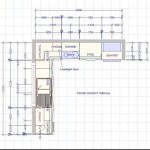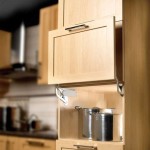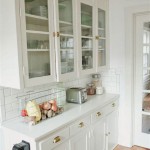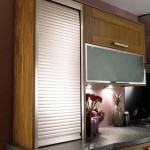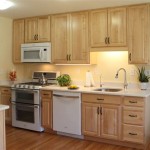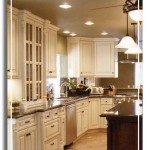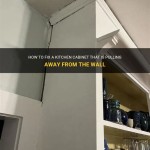Kitchen Cabinet Hanger Brackets: A Guide to Installation and Use
Kitchen cabinet hanger brackets are essential components for hanging cabinets securely and efficiently. These brackets, also referred to as cabinet hangers or cabinet clips, are typically made from sturdy metal and come in various sizes and designs to accommodate different cabinet styles and weights. They act as a crucial connection point between the cabinet and the wall, ensuring stability and preventing cabinet movement.
Understanding the types, uses, and installation techniques for kitchen cabinet hanger brackets allows homeowners, DIY enthusiasts, and contractors to achieve secure, well-installed cabinets in their kitchen spaces. By following the right steps and choosing the appropriate brackets, individuals can ensure their kitchen cabinets remain sturdy and functional for years to come.
Types of Kitchen Cabinet Hanger Brackets
Kitchen cabinet hanger brackets are available in a wide range of styles, each catering to specific needs and applications. Common types include:
- Standard Cabinet Hanger Brackets: These are the most basic and widely used brackets. They typically consist of a metal plate with a slot or hole to attach to the cabinet and a hook or clip to secure to the wall. Standard brackets are often suitable for lighter cabinets and offer ease of installation.
- Heavy-Duty Cabinet Hanger Brackets: Designed for robust cabinets and heavy loads, heavy-duty brackets are sturdier and feature reinforced construction. They may have multiple attachment points or utilize thicker metal to enhance load-bearing capabilities.
- Concealed Cabinet Hanger Brackets: Offering a minimalist aesthetic, concealed brackets are designed to be hidden from view. They often have a clip-on mechanism that secures the cabinet to the wall without visible hardware.
- Adjustable Cabinet Hanger Brackets: These brackets allow for fine-tuning of cabinet height and alignment. They typically include a screw mechanism that enables adjustment after installation.
- Specialty Cabinet Hanger Brackets: For unusual cabinet designs or specific needs, specialty brackets exist. Examples include brackets for corner cabinets, island cabinets, or cabinets with unique mounting requirements.
Installing Kitchen Cabinet Hanger Brackets
Installing cabinet hanger brackets is a crucial step in ensuring your kitchen cabinets are securely mounted. The installation process typically involves the following steps:
- Determine the Bracket Placement: Carefully measure and mark the wall where the cabinet will be hung. Ensure the brackets are positioned correctly to support the cabinet's weight and maintain a level installation.
- Drill Pilot Holes: Use a drill bit slightly smaller than the screw size to create pilot holes at the marked locations. This prevents splitting the wall material and ensures smooth screw insertion.
- Install the Wall Anchors (If Needed): Depending on the wall material and the weight of the cabinet, you may need to use wall anchors to provide extra support. Choose anchors suitable for your wall type and follow the manufacturer's instructions for installation.
- Attach the Brackets to the Wall: Secure the brackets to the wall using appropriate screws and driving them into the pilot holes or wall anchors. Ensure the brackets are firmly fastened and level.
- Hang the Cabinet: Carefully lift the cabinet and align the mounting holes with the brackets. Hang the cabinet onto the brackets, ensuring it is level and secure before releasing it fully.
- Secure the Cabinet: Once the cabinet is in place, fasten it to the brackets using the provided screws or bolts. Ensure the cabinet is properly secured to avoid movement or instability.
- Cabinet Weight: The weight of the cabinet is a critical factor. Choose brackets with sufficient load-bearing capacity to safely support the cabinet's weight. Refer to the manufacturer's specifications for weight limitations.
- Cabinet Style: Different cabinet designs may require specific bracket types. Consider the cabinet's size, shape, and mounting points when selecting brackets.
- Wall Material: The type of wall material will affect the installation method and the need for wall anchors. Ensure the brackets and anchors are compatible with your wall type for secure installation.
- Aesthetics: If desired, consider brackets with a minimalist design or concealed mounting options to enhance the overall look of your kitchen.
- Ease of Installation: Some brackets offer easier installation than others. Choose brackets that suit your skill level and available tools for a smooth and efficient process.
Considerations for Choosing and Using Kitchen Cabinet Hanger Brackets
When selecting and using kitchen cabinet hanger brackets, several factors need consideration:
Kitchen cabinet hanger brackets are an essential part of creating functional and aesthetically pleasing kitchens. By understanding the different types, installation techniques, and considerations for choosing the right brackets, individuals can achieve secure and well-installed cabinets that will remain sturdy and enhance the overall kitchen space.

Hanging Bracket Wall Hanger Plate 63mm Kitchen Cabinet Cupboard Mounting Overhead 150kg Load Capacity Fixing King

Hafele Nylon Cabinet Bracket Plate Toolstation

Kitchen Cabinet Wall Mounting Brackets Jet Press

X2 Koala Cabinet Hangers Spider Concealed Dowels Mounting 29036910

Koala Concealed Cabinet Hanger Fix Zinc Steel Pair

Hafele Spider Concealed Wall Hanger Brackets Set Debonair Joinery S

Heavy Duty Wall Cabinet Mounting Adjustable Brackets Hangers Debonair Joinery S

Goodhome Cicely White Wall Hanging Bracket Kit W 175mm Diy At B Q

Wall Unit Fitting Adjustments Diy Kitchens Advice

X2 Kitchen Wall Cabinet Hanger Mounting Plastic 29000740
Related Posts

